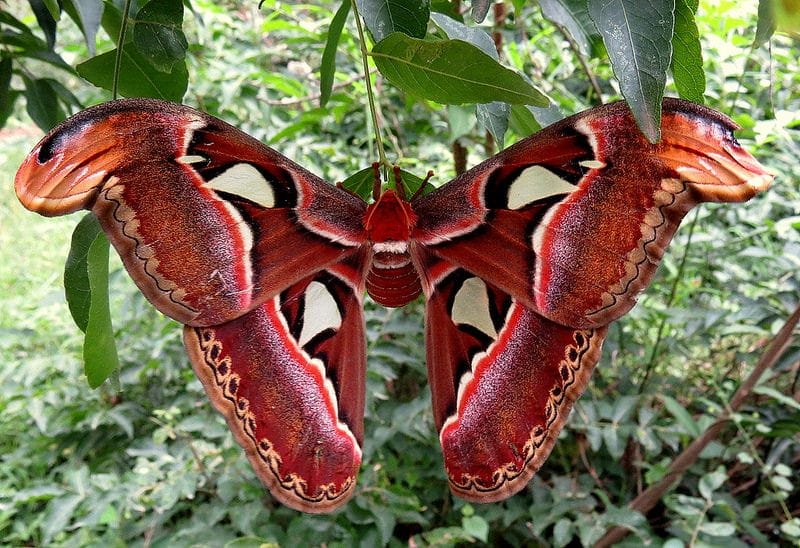
Studying the Atlas moth is like opening a book filled with fascinating stories about nature’s ingenuity. From their incredible life cycle to their unique defense mechanisms, each aspect provides valuable insight into the natural world. So, what exactly have scientists discovered about these magnificent creatures? Let’s dive in and unwrap the layers of research that have peeled back the mysteries surrounding the Atlas moth.
The Life Cycle: Nature’s Metamorphosis
One of the most intriguing aspects of the Atlas moth is its life cycle. It undergoes a transformation that leaves many in awe. Starting from an egg, it develops into a caterpillar before wrapping itself in a cocoon and emerging as a moth. This process, known as metamorphosis, is fundamental to understanding biological development.
Scientists have studied the various stages of this process in detail. For example, researchers have found that the caterpillar stage can last up to several weeks, during which the moth feeds voraciously on leaves. By observing how these caterpillars interact with their environment, scientists can draw conclusions about their dietary preferences and habitat needs. These insights can help in conserving their natural habitats, which are often threatened by deforestation and urbanization.
Once the caterpillar transforms into a pupa, it enters a resting phase called diapause. Here, researchers have noted that environmental factors, such as temperature and humidity, play a critical role in determining when the pupae will emerge as adults. This understanding could have implications for wider studies on climate change and its effects on other species.
Unique Wing Structure and Coloration
Did you know that the Atlas moth’s wings can span up to ten inches? This impressive size isn’t just for show; it also serves essential functions. Scientists have taken a keen interest in the moth’s wing structure and coloration, which might shed light on how color evolution occurs in nature.
The wings are composed of layers of *tiny scales*, which are responsible for their vibrant hues. These scales also help the moth to reflect and absorb light in unique ways. Some studies have focused on the iridescent quality of the wings, demonstrating how they can change color based on the angle of light. This not only aids in camouflage but also plays a role in attracting mates.
Moreover, the patterns on the wings, resembling snake eyes, serve as a defense mechanism. When threatened, the moth may pose with its wings open, creating an illusion that can frighten potential predators. This fascinating defensive strategy showcases how evolution tailors organism traits for survival.
Ecological Roles and Interactions
The Atlas moth may be large, but it occupies a unique niche in its ecosystem. Researchers have been studying its interactions with other species to unravel its role in the food chain. For instance, the larvae of the Atlas moth are food for various birds and other predators, which makes them a vital part of their environment.
In addition, adult moths contribute to pollination. While they may not be as efficient as bees, they do assist in the reproductive processes of certain plants. Understanding these interactions helps scientists map out the impact of losing such species on the overall health of the ecosystem.
Here’s the thing: when we lose a single species, the effects can ripple through the ecosystem, altering food webs and affecting biodiversity. By studying the Atlas moth, scientists gain valuable insights into these complex interactions, allowing for better conservation strategies.
Medicinal Potential: A Surprising Find
Researchers have also turned their attention to the potential medicinal properties of the Atlas moth. It’s intriguing to think that such a beautiful creature might hold the keys to new medical discoveries. Preliminary studies suggest that certain compounds found in its body might have antimicrobial properties.
Scientists are exploring how these compounds could be used to combat antibiotic-resistant bacteria or even contribute to new pharmaceuticals. These findings open the door to exciting possibilities in pharmacology, suggesting that insects like the Atlas moth could be valuable allies in the fight against diseases.
This area of research is still in its infancy, but it shows promise. Honestly, if we can unlock nature’s pharmacy, who knows what breakthroughs might lie ahead?
Conservation Efforts: Protecting the Atlas Moth
With all this knowledge about the Atlas moth, it becomes clear that protecting this species is essential. Their habitats face numerous threats from habitat destruction to climate change. Scientists are actively involved in conservation efforts aimed at preserving not only the Atlas moth but also the ecosystems they inhabit.
Organizations are conducting surveys to monitor the population of Atlas moths in the wild. By assessing their numbers and health, scientists can take necessary steps to protect these delicate creatures. Public awareness campaigns are also critical—educating local communities about the importance of keeping their habitats intact can lead to better protection measures.
Involving communities in conservation efforts helps create a sustainable future where both people and wildlife can thrive. You might be wondering how you can help; even small actions like planting native flowers can attract and support local moth populations.
Future Research Directions
So, what’s next for the study of the Atlas moth? As technology advances, researchers are gaining access to better tools and techniques for studying these incredible creatures. From genetic sequencing to sophisticated imaging techniques, the future of Atlas moth research looks promising.
One area that holds a lot of potential is genetic studies. By understanding the moth’s genetic makeup, scientists could uncover why they have such unique adaptations. This knowledge could even lead to breakthroughs in understanding other species and their evolutionary paths.
Additionally, studies on climate impacts will be pivotal. Understanding how climate change affects not only the Atlas moth but also its habitat will be essential for creating effective conservation policies.
Let me explain: as global temperatures rise, the habitats of many species, including the Atlas moth, are threatened. Research in this area could provide insights necessary to mitigate adverse effects and adapt conservation strategies accordingly.
The Atlas moth is more than just an impressive insect; it’s a reminder of the intricate relationships within our ecosystems and the ongoing dialogue between nature and science. Through studying this magnificent creature, scientists are gaining a deeper understanding of biological processes, ecological interactions, and even potential medicinal advancements.
As we become more aware of environmental issues, the research surrounding the Atlas moth emphasizes the importance of conservation. Every effort to protect this species contributes to the broader goal of preserving biodiversity.
So, the next time you think about butterflies and moths, remember the Atlas moth—a fascinating species that continues to inspire scientists and nature lovers alike. By understanding and protecting it, we honor not just one creature, but the complex web of life that sustains our planet.

